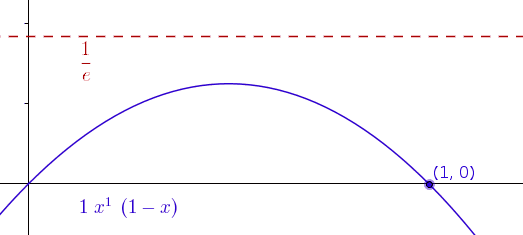Why does the sequence of functions $f_n(x)=nx^n(1-x)$ not converge uniformly?
This is not a solution but it might be useful to others. I decided to investigate the functions geometrically, so I thought I would share in case it brings to light the methods which have been put forward by others.

This demonstrates (non-rigorously) that the function ought not to converge uniformly and it shows the maximum at $\frac{n}{n+1}$ approaching $\frac{1}{e}$ as $n$ grows.
Hint:
Define
$$f_n(x)=nx^n(1-x)\implies f'_n(x)= n^2x^{n-1}(1-x)-nx^n=nx^{n-1}\left(n(1-x)-x\right)=$$
$$=nx^{n-1}\left(n-(1+n)x\right)$$
so if $\;x\in (0,1)\;$ , we get that
$$f_n'(x)=0\iff x=\frac n{1+n}$$
and it's easy to check the above is a maximum , so
$$\forall\;x\in (0,1)\;,\;\;f_n(x)\le f_n\left(\frac n{1+n}\right)=n\left(\frac n{1+n}\right)^n\left(1-\frac n{1+n}\right)=$$
$$=\frac n{n+1}\frac1{\left(1+\frac1n\right)^n}\xrightarrow[n\to\infty]{}e^{-1}$$
Hint: Show that the extremum of $f_n$ is attained at $x_n=\frac{n}{n+1}$ and that $f_n(x_n)= n\ \left( \frac{n}{n+1} \right)^n (1-\frac{n}{n+1})$ converges as $n\rightarrow \infty$ to a non-zero value.